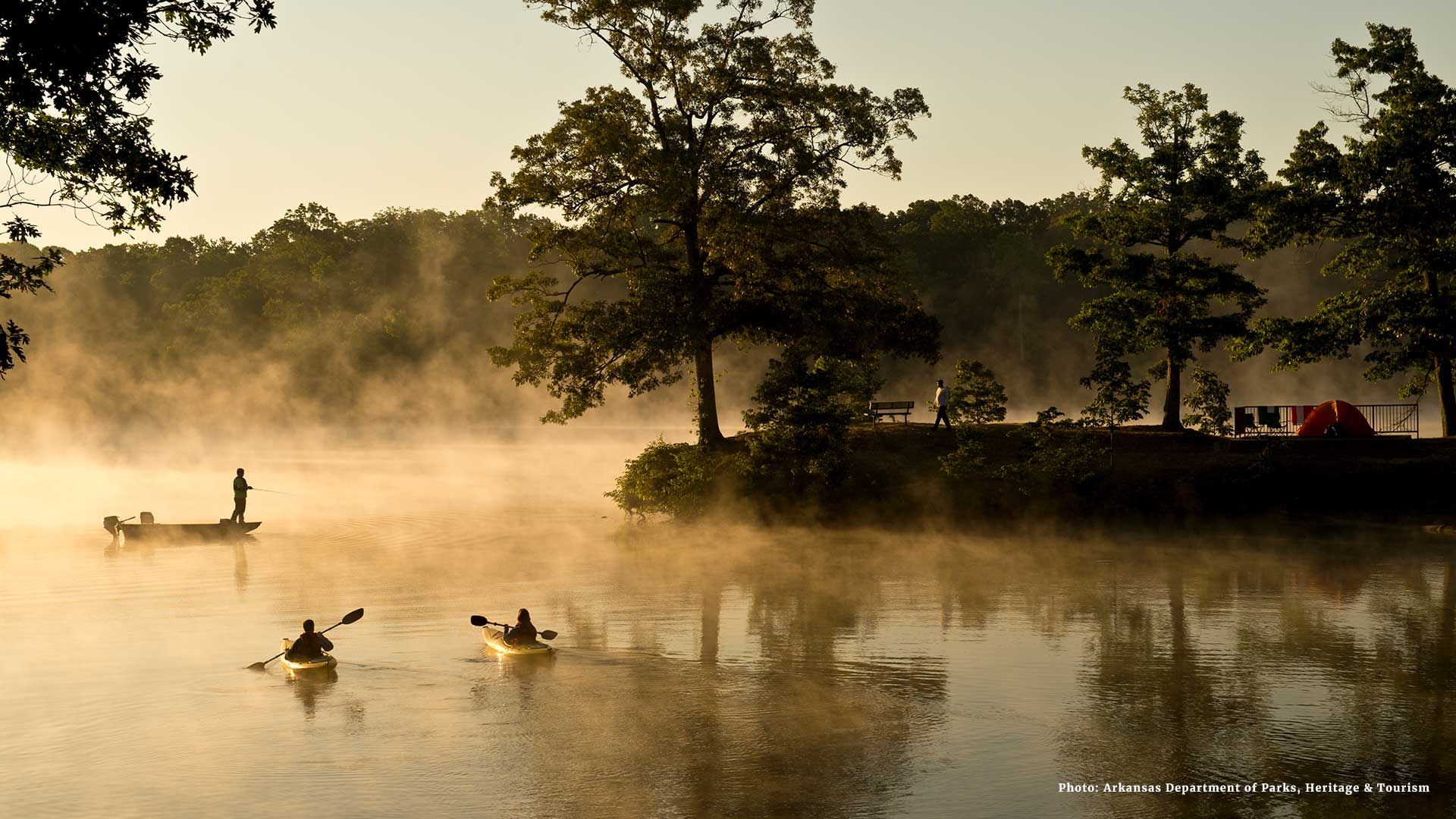It’s a great time to get out and explore the Great River Road. Here’s a state-by-state look at parks and natural areas you shouldn’t miss on your next Mississippi River road trip.
Minnesota: Itasca State Park
While it’s most well-known as the location of the headwaters of the Mississippi River, Itasca State Park in northern Minnesota has a lot more to offer, including nearly 50 miles of hiking trails, hundreds of campsites, historic lodges, and four lakes to explore (including Lake Itasca, the source of the Mississippi River).
Wisconsin: Wyalusing State Park
Located at the confluence of the Mississippi and Wisconsin rivers, Wyalusing State Park is one of Wisconsin’s oldest and most scenic state parks. Visitors will discover outstanding views from the 500-foot-tall bluffs overlooking the river, as well as 14 miles of hiking trails, more than 100 campsites, canoe and kayak rentals, great fishing, and much more.
Iowa: Effigy Mounds National Monument
This National Park Service site, located just north of Wyalusing State Park on the Iowa side of the Mississippi River, preserves more than 200 American Indian mounds that were constructed thousands of years ago along one of the most scenic stretches of the river. Enjoy the natural beauty of the area with a hike along the trails or go on a ranger-led tour to learn more about the natural and cultural history of the region.
Illinois: Pere Marquette State Park
This scenic state park–Illinois’ largest–is located just north of St. Louis at the confluence of the Illinois and Mississippi rivers. Pere Marquette State Park is a popular destination in all seasons, known for its great views of the Illinois River and plentiful recreational opportunities, including camping, horseback riding, hiking, fishing, and boating.
Missouri: Edward “Ted” and Pat Jones-Confluence Point State Park
Also located just north of St. Louis, this small Missouri state park can be found at the meeting of the Mississippi and Missouri rivers, where the Lewis & Clark Expedition began their famous voyage at the turn of the 19th century. A short trail that takes visitors to the confluence point is also a great place for birdwatching in the spring.
Kentucky: Columbus-Belmont State Park
Overlooking the Mississippi River in western Kentucky, Columbus-Belmont State Park is s home to an interesting Civil War museum located in a farmhouse that once served as a Confederate hospital. The park also includes a campground, hiking trails, and a picnic area.
Tennessee: Reelfoot Lake State Park
Reelfoot Lake is a popular destination for outdoor recreation and is home to great fishing and birdwatching (especially during the spring and fall migrations along the Mississippi River Flyway). Three hiking trails along the lakeshore are great for waterfowl viewing. The park’s nature center includes captive raptors and other wildlife from the area.
Arkansas: Mississippi River State Park
Located on the banks of the Mississippi River in the St. Francis National Forest in central Arkansas, this park features dramatic and beautiful scenery. Explore the park’s trails or go fishing for largemouth bass, crappie and channel catfish. The park is part of the Audubon Great River Birding Trail and offers a diverse array of birds and wildlife.
Mississippi: Yazoo National Wildlife Refuge
The Yazoo National Wildlife Refuge is the oldest wildlife refuge in Mississippi and is a popular spot for wildlife observation and birdwatching. Visitors are encouraged to check out the refuge’s two dedicated wildlife observation areas–the Holt Collier Boardwalk and Observation Tower on Lizard Lake and the open-sided observation tower at Alligator Pond.
Louisiana: Barataria Preserve
Part of the Jean Lafitte National Historic Park and Preserve in and around New Orleans, the Barataria Preserve covers 26,000 acres of Louisiana wetlands, hardwood forests, swamps, bayous, and marshes. Visitors will encounter a variety of wildlife, including alligators and more than 200 species of birds, as they explore the preserve’s trails and waterways. Ranger programs are offered daily, and admission to the preserve is free.








